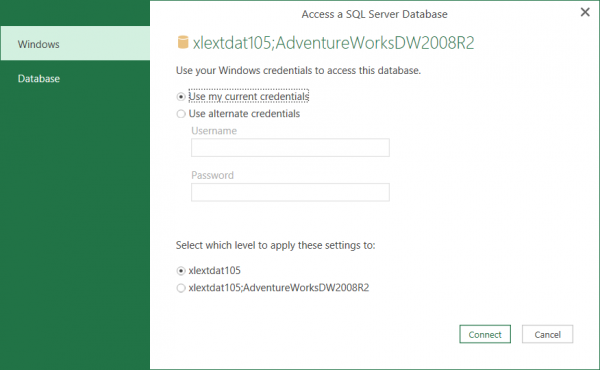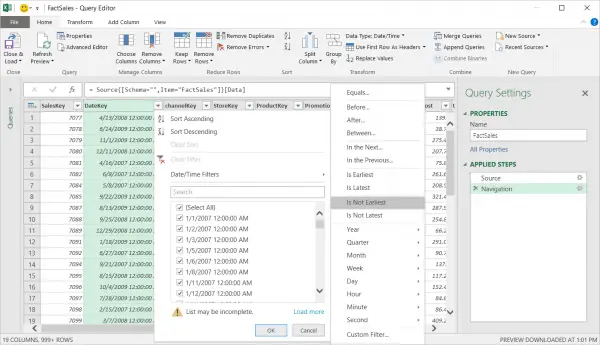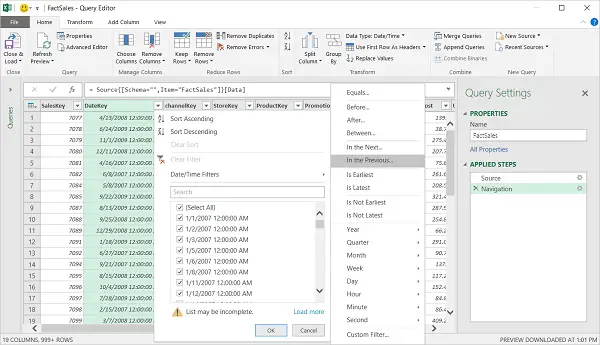Get & Transform in Excel can help you search for data sources, make connections, and shape that data in ways you deem fit. For instance, you can remove a column, change a data type, or merge tables. Once you’ve set things up, you can share your findings or use your query to create reports.
Moreover, the addition of the Power Query tools as an integral part of Excel within the Get & Transform group of the Data ribbon tab not only extends the ability to process more data but cope with the excess burden. The Get & Transform in Excel and the Power Query add-in include some new or improved Data Transformation features, as well.
How to use Get and Transform feature in Excel
Option to set credentials at the server level
The update compensates for what was missing earlier to some extent. Users now have the discretion to set the scope for their credentials when prompted for Database credentials. This functionality is provided as a radio button option at the bottom of the Credentials dialog.

Copy and paste queries between Power BI Desktop and Excel
Excel users often try all sorts of permutations and combinations when it comes to using Excel for daily activities, alongside Power BI Desktop for dashboard and sharing scenarios. Previously, copying and pasting queries between different Excel workbooks was enabled. Now, the new update makes it seamless for users to copy and paste their queries between Excel and Power BI Desktop. Users can right-click a query or a query group in the Queries task pane in Excel workbook to copy those queries. Once copied, the queries can be pasted into the Queries task pane in Query Editor for Power BI Desktop.
Filter by “not earliest/latest date.”
Excel now features a new Date/Time columns filter option in the Query Editor. The tool allows users to filter by dates that are not the earliest within the current column.

Filter by “is in previous N minutes/hours/seconds.”

Another new Date/Time filter offers users the ability to filter out values that are within the previous N minutes/hours/seconds. This can be accessed from the ‘In the Previous… option’ visible under the Filter menu for Date/Time columns.
We hope the post helps you get started.
Read: How to change Page Orientation to Landscape in Excel.
Leave a Reply